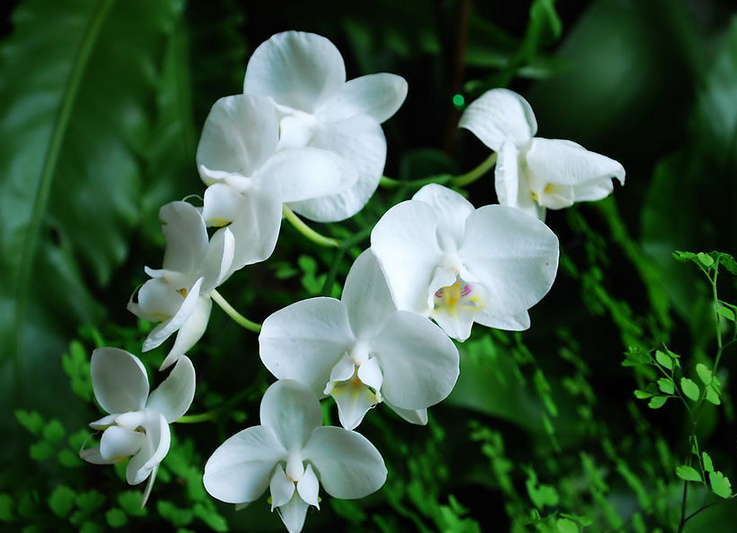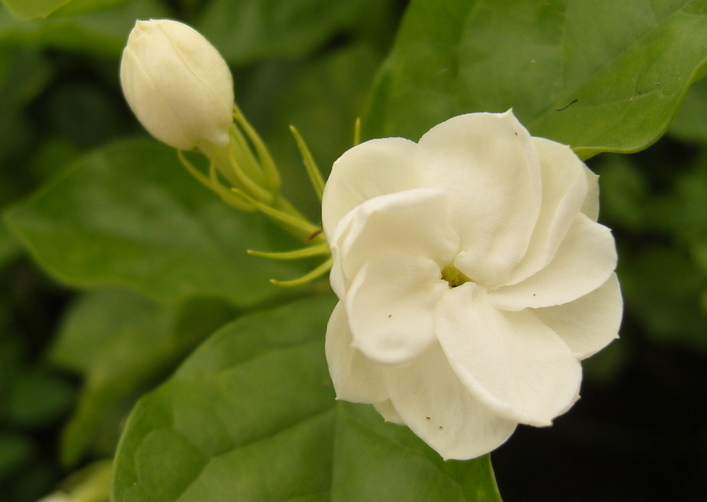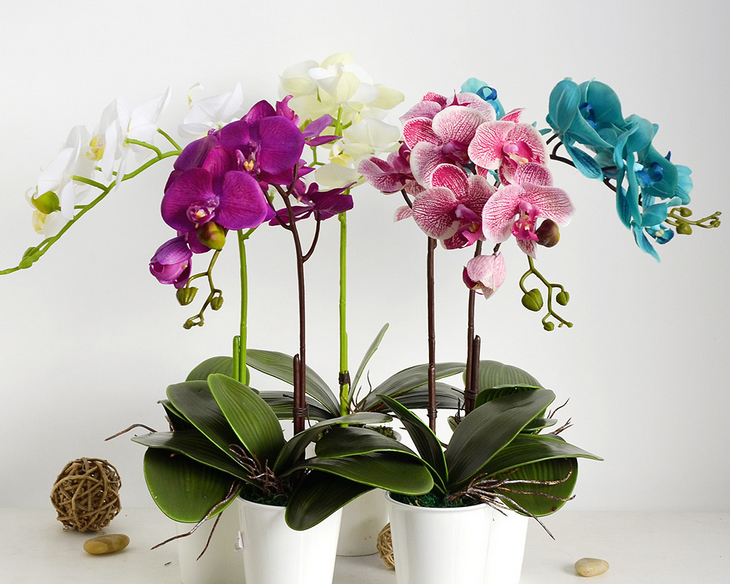Analysis of Orchid planting and its Propagation methods
Orchid is one of the four gentlemen, orchid is a kind of temperament and elegance. Decorate the net editor to remind you that when planting orchids, you must first master some relevant knowledge, the following and decorate the network editor to learn more about it.

Analysis of Orchid planting and its Propagation methods
Orchids are propagated by sowing and dividing plants.
The seeds of orchids can be sown as they are picked. The orchid has a characteristic, that is, the orchid root must be symbiotic with the orchid to survive. Therefore, sowing often sows the seeds on the basin of the mother plant, using the orchid of the mother plant to grow the teeth. The seeds germinate after about half a year, and can be cultured in a small pot after growing in the mother basin for two months.
The split-plant method is commonly used at present. Due to the different species and persistence of orchids, famous orchids have their own opinions on when it is best to split. Generally speaking, the more suitable time is the spring when the new buds are not coming out and the autumn when the orchids gradually stop growing. Because it is not easy to damage the new buds at this time, the temperature is relatively peaceful, so it is easy to operate and restore the plant. The summer temperature is high, which is the peak growing season of orchids, while the winter is cold, the resistance of plants is weak, and ramets are mostly disadvantageous. It can also be mastered after the flower blossoms. Generally speaking, the flowering in summer and autumn should be in the early spring, and the flowering in early spring should be in the late autumn. This not only does not affect flowering, but also can stimulate the tillering of leaf buds, green leaves and colorful flowers.
When ramet, the mother plant should be removed from the basin, the soil should be cut off and divided into several clumps with knives, each clump should bring 4 pseudobulbs and new buds, and the withered leaves and rotten roots should be trimmed. If you use the wild orchids bought in the market, most of the roots have been withered. Soak in clean water first, after absorbing enough water, wash and clean the roots, dry until the roots turn white before planting.
Orchids can be planted with black mud, peat soil, pastoral soil, pine soil, moss fresh, fern root, bark and so on. The bottom of the basin is covered with tiles, then covered with a layer of broken brick and stone, with a thickness of 1/4 of the depth of the basin to enhance air permeability and drainage, and then spread a layer of culture soil. Plant the orchid, fill the culture soil, and cover the bulb. The soil should be compacted, and the soil should not be filled 2 cm away from Yikou, which is convenient for watering. After planting, pour enough water and place it in a cool shade. Half a month later, it was moved to a sunny and ventilated environment. In order to increase beauty and moisturizing power, the basin can be covered with a layer of small broken white stone.
There are four precepts in raising orchids: "spring does not come out, summer does not come out, autumn is not dry, and winter is not wet." If the temperature is unstable in spring, it is easy to get cold when you leave the house early. It is safer to check out in early April. Summer should be placed in the shade to avoid direct sunlight and take scattered light to nurture. Autumn is the orchid sprouting period, to maintain the corresponding humidity, avoid drying, orchid root is fleshy, dormant in winter does not need much water, basin soil is wet, do not water too much, so as not to sprout root and leaf diseases.
Fat should be thin and thick: in the growing period. Pour the rotten bean cake water and horseshoe sauce residue water once every semimonthly. The effect is better if an appropriate amount of potassium dihydrogen phosphate is added. No fertilizer is applied in hot summer. When the temperature is too high (more than 32 ℃), water is sprayed several times in addition to watering every day. It is suitable to use slightly acidic water. Often spraying the leaves with clean water can not only improve the growth environment of potted orchids, but also keep the leaves clean and reduce the chance of infection of diseases and insect pests.
Orchids are easy to produce shell insects and can be sprayed with dichlorvos EC 1000. When whitefly is damaged, it should be sprayed with 2000 times solution of deltamethrin. Langen has a sweet taste and is easy to attract ants, which can be killed by meat bones. Orchids are prone to anthracnose and black spot. After the occurrence of the disease, the burning of the diseased leaves should be removed in time, and the distance between the pot plants should be opened to improve the ventilation and light transmission conditions. Reduce water spraying and control humidity. And combined with carbendazim for control.
What is Magnolia Flower language? a detailed explanation of the planting method of Magnolia
Magnolia is clean and simple, without too much decoration and decoration, has always been loved by people. So what are the words of magnolia? The following is a detailed analysis of the planting method and language of magnolia for you.
What is Magnolia Flower language? a detailed explanation of the planting method of Magnolia
Magnolia archives
English name: Magnolia
Scientific name: Magnolia liliflora Desr.
Aliases: Lin lan, laurel orchid, Dulan, magnolia, wooden pen, yellow heart, purple magnolia, girl flower and so on.
Family: Magnoliaceae of Magnoliaceae
Genus: Magnolia of Magnolia
Distribution of origin: Magnolia is a kind of plant, which is native to mountain mixed forest and mountain forest in central China, and is now cultivated in hillside mixed forest with an altitude of 700-1800m.
Morphological features: small deciduous trees, 5 meters high. The wood is fragrant, simple leaves alternate, Obovate-oval; flowers terminal, petals 6, purplish red on the outside, nearly white on the inside; fruit rectangular round. Root is fleshy.
It is reported that magnolia was introduced to Fusang in China during the Tang Dynasty and was introduced into Europe in the 17th century (introduced to Britain in 1790). Because of its large and beautiful flowers, it is widely spread in Europe and the United States. In the United States, the Magnolia Society has been set up because of magnolia, and now it has cultivated rich and colorful horticultural varieties of magnolia.
What is Magnolia Flower language? a detailed explanation of the planting method of Magnolia
What is the floral language of magnolia?
Magnolia trees can be up to 5 meters high, when the flowers are proud to stand on the branches, pure white and holy, because Magnolia flowers bloom first, and then grow leaves, so magnolia blossoms are full of white trees without miscellaneous colors, making people feel admired suddenly. Therefore, magnolia flower language is a noble soul.
The noble soul can be sent on teacher's Day. On teacher's Day every year, it is popular for children to give their own gifts to teachers. Greeting cards are not environmentally friendly and out of date. Sending expensive gifts is not in line with the identity of children, so it is better to send an open magnolia. To express my respect and praise for the teacher's noble soul.
Bai Juyi, a poet of the Tang Dynasty, once wrote a poem praising magnolia. The poem said, "the purple room is torn down according to rouge, and the plain and beautiful wind is greasy with powder." It's so weird that Mulan used to be a girl. " Here, Mulan borrows the ancient legendary heroine Hua Mulan.
What is Magnolia Flower language? a detailed explanation of the planting method of Magnolia
Planting methods of Magnolia
The method of striping and plant division was used to propagate. Sometimes sowing is also used. Ramet can be carried out in spring and autumn, the mother plant with dense branches can be dug out and planted separately, and the root system and short branches can be trimmed. Striping, selected from 2012 branches, can be propagated by piling soil or burying strips in early spring. Sow seeds, collect seeds in September, store sand in winter, sow in spring the following year, and germinate 20-30 days after sowing. Cultivation and management is simple, pay attention to drought and waterlogging prevention, timely fertilization. The transplant can be carried out before flowering in autumn or early spring, the seedlings are stained with mud, and the big seedlings must carry soil balls. Fertilization was applied once before and after flowering, mainly phosphorus and potassium fertilizer. Maintain soil moisture in high temperature in summer and dry in autumn. After flowering and before sprouting new branches, dry branches, dense branches and short long branches should be cut off.
Mulan likes light and is slightly resistant to shade. Like warm and humid climate, but also can withstand cold. Like fertile, moist and well-drained sandy soil, not resistant to drought, avoid alkali, and grow poorly on dry, alkaline soil and clay. The root is fleshy, afraid of flooding, the wound is getting worse, and transplanting is not easy to survive. Strong tillering. Magnolia is propagated by ramets, striping, cuttings, etc.
The transplanting of magnolia is carried out before blooming in spring or after defoliation in autumn, small seedlings need to stay in the soil, and large seedlings carry soil balls. Mulan likes fertilizer, and the mature barnyard manure is applied as base manure from October to November every year. During the sprouting and branching period after flowering, the available nitrogen fertilizer is applied for 2 or 3 times, and the rhizosphere is covered and watered properly in the dry season. Flowers and leaves are expected to flourish in the following year.
Magnolia must be sprouted and pruned if it is to become a tree. Magnolia root rot, red spider, drill beetle and so on should be controlled in time.
Analysis on the Technical points of "Monkey Noodle Orchid" in Family Culture
There is a kind of "alien" growing in orchids, which is monkey-faced orchids. This kind of orchids get their name because of the form of monkey-faced orchids, and their prices on the market are also different. They belong to higher-priced flowers. So what do we need to pay attention to in breeding such a precious pot of flowers?
Monkey face orchid
First of all, solve the environment of orchid planting site.
Orchid planting can be divided into courtyard planting and large field planting. General family orchid can choose balcony or rooftop, you can also build a shed on the windowsill. Glass greenhouses can be built if conditions permit. But planting places, whether on the balcony, rooftop or windowsill to build appropriate shading nets to block the sun and wind heat, to have good ventilation conditions, to maintain appropriate humidity. When it is too hot in summer, a movable shading net should be added to the roof to flexibly control the light.
Choose good plant materials and pots.
Orchid basin: orchid basin is the living room of orchids, which has a great influence on the growth of orchids. In the past, traditional orchids used large tile pots, but now most of the high-grade orchids use small trumpet pots. There are pottery pots and plastic pots, each with its own advantages and disadvantages. What kind of pot to use depends on each person's habits and varieties. However, it is best to use the same orchid basin with different sizes in an orchid shed for unified management in the future.
Plant material: the orchid plant material (base material) used to use pond mud in the past, but now it uses pond cornerstone, pumice stone, wind fossil, absorbent stone, pottery and other plant materials. Field species of orchid mostly use sawdust, grain husk, dregs, cinders, sea sand, peanut shells and other soft plants, with foam at the bottom and so on. Mixed use is more common. The use of these plants has its own advantages and disadvantages. What kind of plant material is better to use depends on the habits of each person, the varieties of cultivation and the pots used (the pots and plants cooperate with each other).
Experience should be constantly summed up in practice.
In order to grow orchids well, we must also master the management of watering, fertilization and the control of diseases and insect pests. Among them, the principle of fertilization should be applied in sunny day, thin application, diligent application and no application in hibernation. It is suggested that we should take part in the practice of cultivating orchids, usually read more books, visit more, ask more questions, and constantly explore and sum up experiences and lessons in practice in order to continuously improve the technical level of planting orchids.
- Prev

Culture methods and matters needing attention of Jasmine Flower
The jasmine is fresh and elegant, and the flowers are beautiful, which can be used not only to watch but also to make tea. many people want to raise jasmine on their own, so what should they do when raising jasmine? Are there any methods and precautions? Next, let's learn more about it with the editor of the decoration network.
- Next

Phalaenopsis cultivation methods and precautions
Phalaenopsis is named after butterflies because of its flower shape. It is loved by people. Many people want to cultivate Phalaenopsis by themselves. A decoration network Xiaobian reminds you that when breeding Phalaenopsis, you must first master certain relevant knowledge, and the following decoration network Xiaobian to understand in detail what Phalaenopsis breeding methods have.
Related
- Fuxing push coffee new agricultural production and marketing class: lack of small-scale processing plants
- Jujube rice field leisure farm deep ploughing Yilan for five years to create a space for organic food and play
- Nongyu Farm-A trial of organic papaya for brave women with advanced technology
- Four points for attention in the prevention and control of diseases and insect pests of edible fungi
- How to add nutrient solution to Edible Fungi
- Is there any good way to control edible fungus mites?
- Open Inoculation Technology of Edible Fungi
- Is there any clever way to use fertilizer for edible fungus in winter?
- What agents are used to kill the pathogens of edible fungi in the mushroom shed?
- Rapid drying of Edible Fungi

